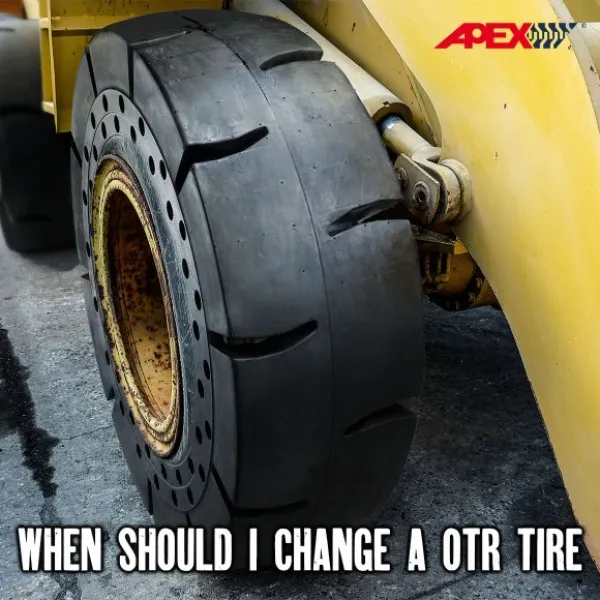OTR Tire Maintenance Guide: When to Replace Your Off-the-Road Tires

Tread Depth: One of the most important indicators of tire wear is tread depth. As the tread wears down, the tire's ability to grip the terrain decreases, increasing the risk of slippage and accidents. Most OTR tires have built-in tread wear indicators, but if not, a simple tread depth gauge can be used to measure tread depth. Generally, when the tread depth reaches 25% of its original depth, it's time to consider replacement.
Visible Damage: Inspect the tire regularly for any visible signs of damage, such as cuts, cracks, bulges, or punctures. Even minor damage can compromise the structural integrity of the tire and lead to sudden failure. If any damage is detected, especially in the sidewall or bead area, it's advisable to replace the tire immediately.
Age of the Tire: OTR tires degrade over time, even if they're not in use. Exposure to UV radiation, extreme temperatures, and harsh chemicals can accelerate this process. As a general rule, tires should be replaced every 5 to 7 years, regardless of tread wear, to ensure optimal performance and safety.
Performance: Pay attention to the tire's performance during operation. If you notice decreased traction, increased rolling resistance, or uneven wear patterns, it could indicate that the tire is nearing the end of its lifespan. Regularly monitoring performance metrics can help you identify potential issues early and prevent costly downtime.
Industry Guidelines: Consult manufacturer recommendations and industry standards for guidance on tire replacement intervals and best practices. These guidelines are based on extensive testing and research and can provide valuable insights into tire longevity and performance.
In conclusion, knowing when to change an OTR tire is essential for maintaining safety, efficiency, and productivity in off-road operations. By regularly inspecting tread depth, checking for visible damage, considering the age of the tire, monitoring performance, and following industry guidelines, you can ensure that your OTR tires are replaced at the optimal time, reducing the risk of accidents and maximizing tire life. If you have any questions or need assistance with your OTR tires, don't hesitate to contact us. Our team at APEXWAY is here to help you with all your tire needs, ensuring you get the best performance and longevity from your equipment. Reach out to us today!





